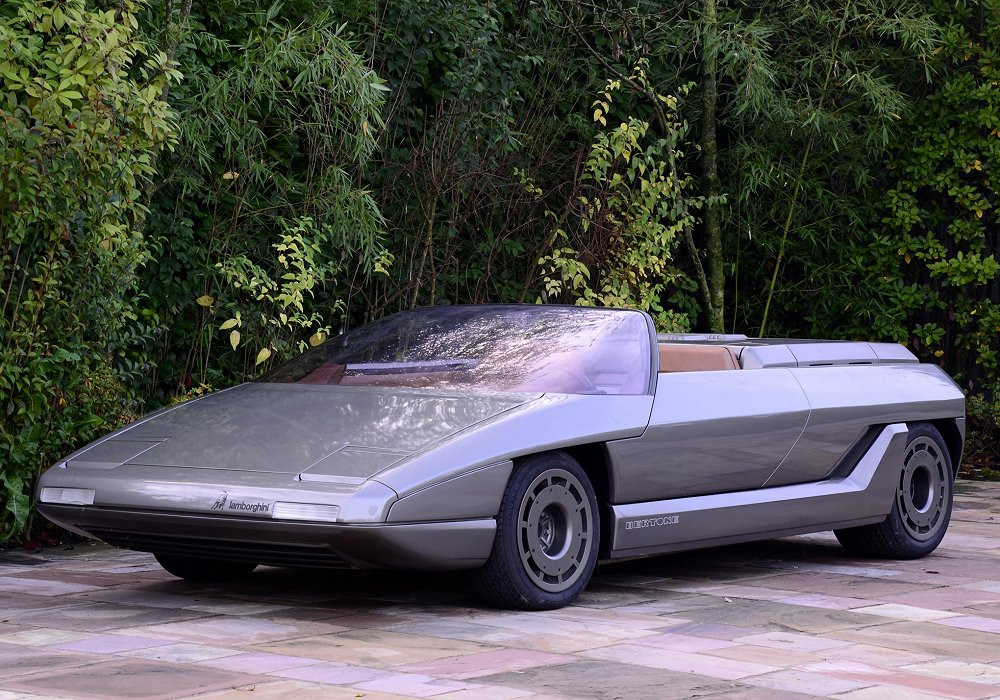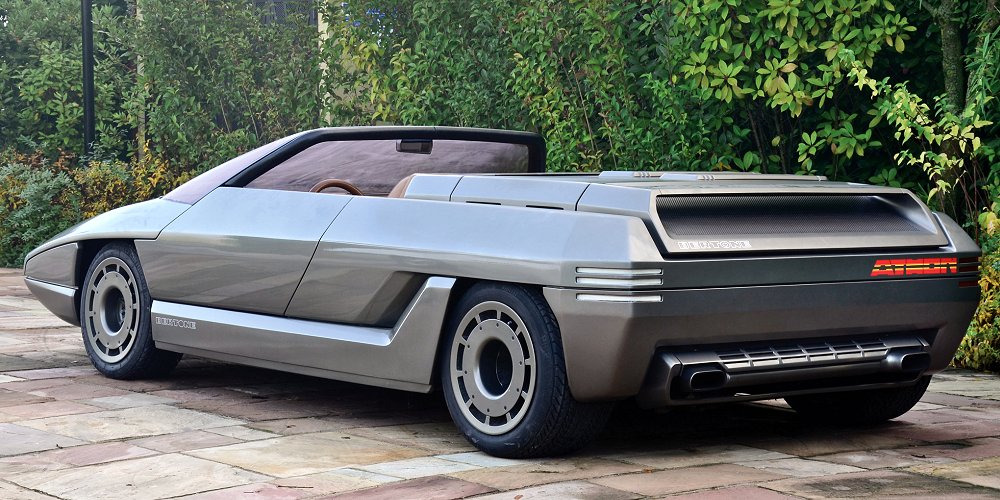Description
The Lamborghini Athon Bertone, unveiled in 1980 at the Turin Motor Show, was a daring and futuristic concept that represented both a creative revival for Bertone and a statement of design philosophy for Lamborghini at a time of uncertainty. Conceived as a celebration of Italian design ingenuity rather than a production proposal, the Athon was a sleek, open-top roadster that embodied the boldness, precision, and technical artistry that had long defined the partnership between Lamborghini and Bertone.
The Athon emerged during one of Lamborghini’s most turbulent periods. The company had declared bankruptcy in 1978 following years of financial instability, and production had largely ceased. Yet despite this turmoil, Bertone’s design director Marc Deschamps wanted to show that the Lamborghini spirit of innovation was still alive. Working from a bare Lamborghini Silhouette chassis, his team created the Athon—a car that was as much a sculpture as a machine, a vision of a future Lamborghini that might be reborn from adversity.
The Athon’s design was strikingly angular and architectural, even by the standards of late 1970s Italian concept cars. Every surface was defined by clean planes, sharp creases, and geometric precision. The front was low and wedge-shaped, with integrated pop-up headlights and a minimal overhang that accentuated the car’s forward motion. The sides featured deep horizontal channels that visually lowered the car’s stance, while the rear was dominated by a full-width louvered panel and trapezoidal taillights. The absence of a roof or roll bar gave the Athon a sculptural, almost cinematic quality—its open cockpit flowing seamlessly into the bodywork like a piece of modern industrial design.
Bertone’s name for the car, “Athon,” was inspired by the Egyptian sun god Aton, a fitting reference for a vehicle designed as a pure open-air roadster. The car’s silver-grey paint contrasted with bronze-tinted glass elements, creating a futuristic aesthetic that was both elegant and purposeful. The proportions were compact but balanced: the Athon sat low and wide on its stance, its visual weight centered between its short overhangs and cleanly defined wheel arches.
Beneath its avant-garde exterior, the Athon was mechanically based on the Lamborghini Silhouette, using the same 3.0-litre V8 engine producing 260 horsepower. Mounted transversely behind the cabin, the engine drove the rear wheels through a five-speed manual gearbox. With a kerb weight of just over 1,200 kilograms, the Athon promised lively performance—0 to 100 km/h (62 mph) in under 6 seconds and a top speed of around 250 km/h (155 mph). The mechanical layout remained faithful to Lamborghini’s mid-engine tradition, giving the concept both technical credibility and dynamic authenticity.
The interior was a masterpiece of 1980s futurism and one of the most remarkable aspects of the Athon’s design. The dashboard was an angular, wraparound structure that placed all controls within easy reach of the driver. Digital displays replaced traditional gauges, while a unique single-spoke steering wheel and sculpted metallic controls gave the cabin a minimalist, high-tech feel. The seats were trimmed in soft brown leather with integrated headrests, contrasting elegantly with the geometric aluminium panels around them. Despite its experimental appearance, the interior was fully functional and hinted at the digital age that automotive design was about to enter.
The Athon was fully drivable, built with the same attention to engineering detail that characterized Bertone’s earlier collaborations with Lamborghini. The chassis and suspension were modified to handle the open-top structure, and the car’s weight distribution was finely balanced to maintain the performance characteristics of the Silhouette. It was never intended for production, but it demonstrated Bertone’s ability to turn conceptual ideas into working vehicles—machines that could exist both as art and as proof of engineering capability.
When it was unveiled at the 1980 Turin Motor Show, the Athon stood out as a symbol of optimism in a challenging time. Lamborghini’s financial troubles had cast doubt on the company’s future, yet this concept reminded the world of its creative vitality. The Athon was met with critical acclaim, praised for its purity of form and originality of execution. Although it was never developed further, it influenced Lamborghini’s later design language, particularly in the geometric precision seen in the Jalpa and Countach evolutions of the 1980s.
Over the decades, the Athon has achieved legendary status as one of the most beautiful and thought-provoking concept cars ever built. It remains in remarkably preserved condition, having spent much of its life as part of Bertone’s private collection before being sold at auction in 2011. Today, it is recognized not only as a milestone in Lamborghini’s design history but as a work of art that perfectly encapsulates the spirit of its era—when designers dared to experiment without restraint and transform technology into sculpture.
The Lamborghini Athon Bertone stands as a testament to resilience and imagination. It was born from a moment of crisis but emerged as a vision of renewal—a car that symbolized the enduring brilliance of Italian design and Lamborghini’s unbreakable link between power, beauty, and innovation. Even now, decades later, it remains a timeless reminder that true creativity can shine brightest in times of uncertainty.




